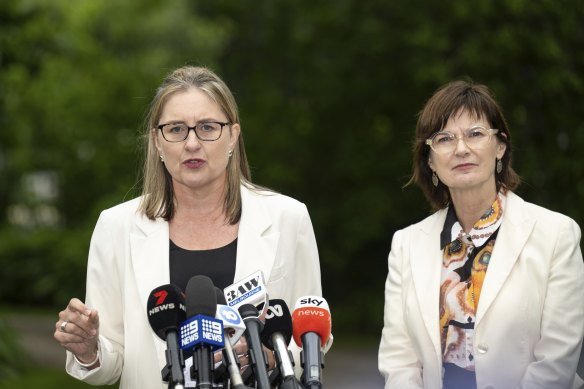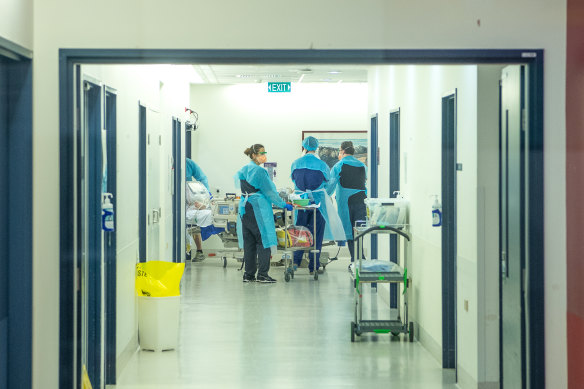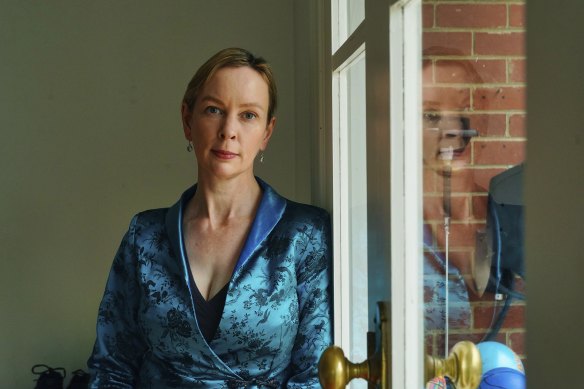This was published 10 months ago
Victoria will not force hospitals to amalgamate after public backlash
By Kieran Rooney and Henrietta Cook
Jacinta Allan’s government is retreating from its plans to restructure and amalgamate all the state’s health services and will instead add $1.5 billion in extra funding as it seeks to calm a public backlash.
Victoria has been weighing mergers of hospital services for more than six months. An independent committee has provided recommendations to the government on a new health services plan, which outlines the changes.

Victorian Premier Jacinta Allan and Health Minister Mary-Anne Thomas earlier this year.Credit: Penny Stephens
But after questions from The Age, the government announced on Wednesday night it would add $1.5 billion to the health system and said there would be no forced amalgamations.
“We know our hospitals have just seen their busiest year on record – that’s why we’re giving them the funding they told us they needed,” a spokesperson said. “We’ve worked with hospitals to develop their final budgets – making sure that every dollar prioritises patient care.
“We backed our nurses with a 28 per cent pay rise, and now we’re backing our hospitals – because only Labor is on the side of our healthcare workers and hospitals.”
In the aftermath of this year’s Victorian budget, The Age reported exclusively that the state’s hospitals faced being amalgamated into large networks – reducing 76 health services to 12 – in an efficiency-driven overhaul of the public health system. Fears were raised that regional patients could be forced to travel long distances for basic services and that local jobs would be lost.
The government is yet to detail what it plans to do now that forced amalgamations are off the table.
But five government and hospital sources, speaking anonymously to detail confidential discussions, said they now expected Labor to announce changes that were less pronounced.
New options expected to be taken to the cabinet differ significantly from the larger amalgamation plan. They include a focus on “partnerships” that would preserve the independence of many hospital boards and chief executives, but allow more sharing of resources such as communications.
Hospital budgets for the next financial year will be finalised within days, after complaints that the government’s proposed funding for 2024-25 would force health services to find millions of dollars in savings and cut back on procedures such as planned surgeries.
The state’s finances are under pressure, as the May budget predicted Victoria’s net debt would rise to $187.8 billion by June 2028, leaving taxpayers with a daily interest bill of $25 million.
Support for the Allan government has also dipped to its lowest level in years, with a survey by Resolve Political Monitor – conducted exclusively for The Age – last month showing Labor’s primary vote had dropped 1 percentage point in the past two months and was just 27 per cent.
Opposition health spokeswoman Georgie Crozier said the government was “panicking about community sentiment and the ongoing crisis across Victoria’s health system”.
“The government has spent years developing their secret health services plan, and in the interests of transparency need to immediately release it,” she said.

One health service executive says there is strong opposition to merging regional services.Credit: Justin McManus
One senior executive of a health service, who did not want to be identified because it could jeopardise his employment, said he had been told the Department of Health was putting its amalgamation plan on hold.
“The lack of communication regarding the health services plan is extremely frustrating,” he said. “The underlying principles were flawed, and the methodology was flawed. Hopefully, the minister will realise this and file it in the trash folder.”
Another senior executive of a health service, who also did not want to be named to protect their employment, said it made sense to amalgamate some metropolitan services such as the Royal Melbourne, Peter MacCallum and Royal Women’s hospitals.

Dr Jill Tomlinson, the Victorian branch president of the Australian Medical Association.Credit: Luis Enrique Ascui
But the executive said there was strong opposition to merging regional health services, as each had their own sovereignty.
“There is no way hospitals will close, but there is an opportunity to network better and share resources,” they said.
The executive said the process dragged for too long and had created anxiety.

Opposition health spokeswoman Georgie Crozier.Credit: Justin McManus
Dr Jill Tomlinson, the Victorian branch president of Australian Medical Association, said mergers would not save money until “years down the track”.
“With the deep levels of concern in the health sector at the moment regarding budget uncertainty and fiscal constraint, it would be a very challenging time to introduce changes in the structure of the health services,” she said.
The possibility of amalgamations sparked protest campaigns in regional areas. Consultation over potential mergers occurred while the government was also in talks with hospitals about their draft budgets and reductions in spending.
The Allan government has been given a report into the health services plan by the independent expert committee.
In June, Northern Health and Western Health announced hiring freezes as they struggled to rein in costs to meet financial targets.
Three Labor MPs, speaking confidentially to detail private talks, said they had not yet been briefed on health service changes, but regional MPs had reported pushback from their communities.
Three separate petitions have appeared over the past six months calling for amalgamations to be avoided.
In May, Health Minister Mary-Anne Thomas appeared to soften the ground for major changes when she said Victoria’s 76 health services were competing against each other and spending too much.
“We have more health services than the rest of Australia combined,” Thomas said at the time.
“NSW has 16 or 17. Queensland is similar. One of the issues associated with that is ... variations in care that can compromise safety.
“The cost of local and agency staff has been increasing rapidly. And one of the reasons for that is we’ve got 76 health services competing against one another for staff. Some health services are spending way too much on consultancies and PR.”
In May, Mansfield Shire Council launched a “hands off our hospital” campaign demanding the state government avoid merging its health service.
At the time, Mayor Steve Rabie said the council was concerned the local hospital’s chief executive and board would be replaced by an advisory board in Shepparton.
“We don’t want to be swallowed up into a large network of hospitals that have no relevancy here to our local community,” he said.
Get the day’s breaking news, entertainment ideas and a long read to enjoy. Sign up to receive our Evening Edition newsletter here.